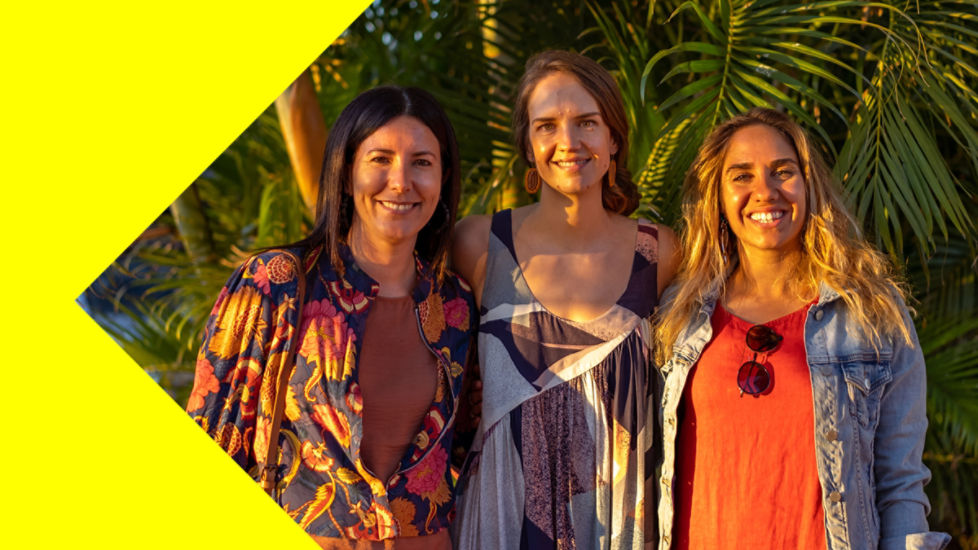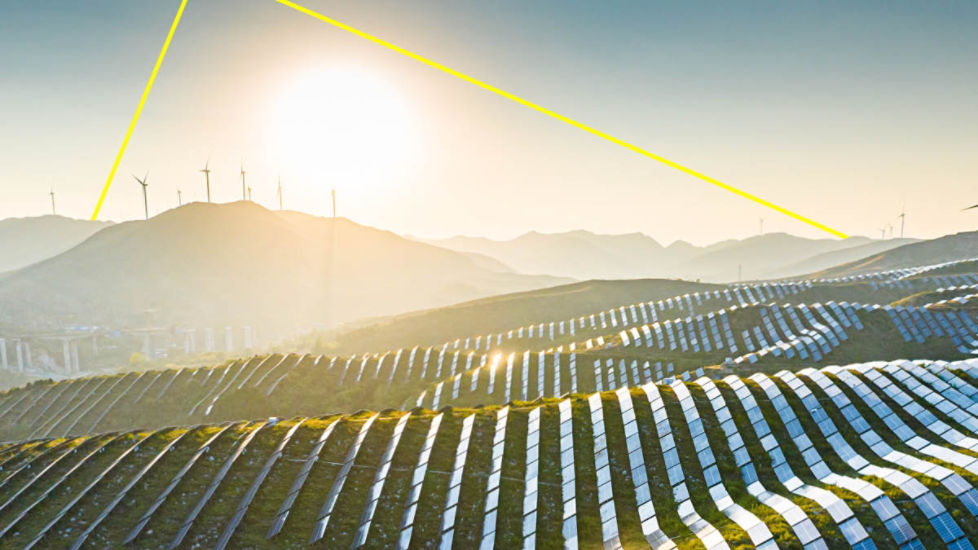Managing the national transition to net-zero carbon emissions is a mammoth and complex task. Leaders from three of Australia’s biggest companies say it demands urgent action underpinned by clear strategy and collective commitment from government, regulators and business.
Matt Comyn was joined by Telstra’s new CEO, Vicki Brady, and long-standing Qantas chief, Alan Joyce.
Against the backdrop of soaring energy prices, they said Australia has enormous potential to be a world leader in renewable energy due to its landmass, innovative technology and abundant natural resources. What’s needed now are the right policy settings and incentives for businesses to bolster their efforts to decarbonise.
Aviation sector faces a complex transition to net zero
Globalisation means air travel is still a necessity. And, as Joyce says, there’s a huge imperative to get it right. But aviation is one of the more difficult industries to transition to net zero. The technology solutions are some years away.
Qantas has two key levers it can currently pull – carbon offsets and sustainable aviation fuel (SAF). SAF is a biofuel with similar properties to conventional jet fuel but a smaller carbon footprint. It can be produced from crops, algae, and waste from forestry and agriculture, including manure.
Joyce said Qantas had the biggest carbon offset program of any of the world’s airlines. About 10% of customers offset their flights. Globally, the figure is around 1%.
The airline has committed to being carbon neutral by 2050, with an interim target of a 25% carbon reduction by 2030. Joyce said Qantas would rely on a number of levers, including SAF, to reach that target.
Energy-efficient aircraft are being rolled out – the new Airbus A321neo burns less fuel and emits 20% less carbon than its predecessors. But large aircraft powered by renewable energy are many years away. Battery-powered aircraft are too heavy for long-haul flights and hydrogen is a complex alternative given its compression and cold storage needs.
"... Energy security is also a massive thing. Having the ability for our own aviation industry, our military, and commercial, to have its own fuel produced onshore – that's massive for a country."
Fuel, however, is not the only pathway to reducing aircraft carbon outputs. The robotics team at UTS in Sydney is analysing weather patterns to improve flying efficiency. European aircraft manufacturer Airbus is researching the flight formations of birds for saving energy, how that relates to aviation fuel burn, and the opportunities for aircraft to fly together.
But at least for the short term, sustainable fuel is the airline’s best solution and, with supporting policy settings, Joyce said Australia could develop its own industry.
“We spend $5 billion a year on aviation fuel... we think if you could get that as an industry in Australia, it would create at least 15,000 jobs. The point is, you need the right settings around government to set this up for the future, and I think it's really critical,” Joyce said.
“The other thing, as we've seen with Ukraine, is energy security is also a massive thing. Having the ability for our own aviation industry, our military, and commercial, to have its own fuel produced onshore – that's massive for a country.”
Accelerating transition in the financial services sector
To truly accelerate Australia’s low carbon transition, CommBank is reviewing Scope 1, 2 and 3 emissions, including the emissions generated by the customers it lends money to, said Comyn.1 That includes fossil fuel clients.
Of CommBank’s trillion-dollar balance sheet, less than half of 1% is lending to fossil fuel customers, and that is down 60% over the past five years.
“Even though it’s tiny, it’s 27% of our total financed emissions,” Comyn said. In response, CommBank has increased the variety of lending products available to support its customers to transition to net zero.
“It's a really important role to support Australia, the economy, our communities, our customers [to] make that transition. There are lots of things that we do around helping our retail customers understand their emissions and helping them finance the capex for solar panels and batteries.”
He said Australia has a distinct advantage to be able to create new industries, especially by bringing together science and technology to look for innovative solutions.
CommBank has partnered with CSIRO to publish de-carbonisation scenarios across critical sectors in the Australian economy.
“We want to be allocating capital to support both the technologies and the transition,” Comyn said.
He added that Australia’s plentiful natural resources can be used in many ways, including to meet the surging demand for carbon offsets and as global provider of raw materials required in renewable energy and electrification given the country’s huge reserves of lithium, copper and cobalt.
“Developing a market with a very strong global reputation is extremely important. As a financial institution we also think about how do we make sure that the settings are right, so that we can try and translate cost of capital reductions into better pricing? Because the incentives really do matter, and we can see that discussed a lot at the moment around energy.”
How Telstra tackles its Scope 3 emissions
Brady said it was imperative that Telstra take swift action to lower its emissions as it is the 13th largest Scope 2 emitter in Australia.
“Every time you’re watching a Netflix program, you’re doing your online banking, booking your airline ticket or you’re doing a Teams call, it’s generating a lot of data over our network... and that keeps requiring more electricity,” Brady said. “For us, it’s core. We know we've got to take very urgent and proactive action.”
Telstra has been carbon neutral since 2020. It has committed to reduce emissions by 50% by 2030 and enable renewable energy generation equivalent to 100% of energy consumption by 2025.
To achieve those targets, Telstra aims to:
- Drive down operating costs through cutting emissions and electricity usage.
- Support big renewable energy projects.
- Provide customers with the lower emission products and services they’re asking for. Migrating to cloud computing cuts emissions by up to 80%.
- Use a shadow carbon price in long-term investments, including pricing in extreme weather events.
- Assess its Scope 3 emissions, which account for 62% of emissions. Being proactive with existing partners and suppliers and looking for partners that can make a big difference.
- Work with its top 100 suppliers on improving their ESG reporting.
Brady said it’s about making decisions today that have long-term impacts. “It’s an ecosystem we’ve all got a part to play in. You can’t do it on your own.”
Our leaders
Matt Comyn has been the CEO and Managing Director of Commonwealth Bank of Australia (CBA) since April 2018. Matt has more than 20 years’ experience across business, institutional and retail banking as well as wealth management and has held a number of senior leadership roles since joining CommBank in 1999.
As CEO, Matt is focused on delivering global best digital experiences for customers, underpinned by strong risk management and a strong commitment to customer service. From 2012 until his appointment as CEO, Matt was Group Executive Retail Banking Services, CBA’s largest operating division, which accounts for more than half of the bank’s profit and also leads the development of digital products and services. Between 2006 and 2010, Matt was Managing Director of the bank’s online share trading and investment business, CommSec, overseeing a significant modernisation of its technology platform and growing market share and profitability.
Matt is a director of the Business Council of Australia and Financial Markets Foundation for Children. He is married with three children and lives in Sydney.
Vicki Brady transitioned from Chief Financial Officer and Strategy & Finance Group Executive at Telstra to CEO and Managing Director in September 2022. After joining Telstra in 2016, Vicki led the Consumer & Small Business function where she led a business unit with $14.6 billion of income and was one of the architects of the T22 strategy. She has also held roles as Group Managing Director, Sales & Service and Group Managing Director, Consumer. Before working at Telstra, Vicki gained extensive executive leadership experience in telecommunications and services companies in Australia and internationally, working for Optus, SingTel and KPMG.
Vicki has a Bachelor of Commerce from the Australian National University and a Master of Science in Management from Stanford University’s Graduate School of Business. She is a member of Chartered Accountants Australia and New Zealand and is a Graduate of the Australian Institute of Company Directors.
When she is not working, Vicki enjoys spending time with her husband and two daughters at home in Sydney.
Alan Joyce has been CEO of the Qantas Group since 2008. During this time he’s overseen the biggest transformation of Qantas since it was privatised in 1995 and the Group’s expansion in Asia. He is currently leading the Group’s recovery from the COVID-19 crisis, which has had a devastating impact on the global aviation industry. Alan served as founding CEO of low-cost carrier Jetstar for five years, establishing its operations in Australia and Asia. Alan has also held key positions at Ansett and Aer Lingus. As a senior business figure in Australia, Alan is well known for championing inclusion and diversity.
To watch this session on-demand or explore other content from CommBank Momentum 2022, visit Momentum.




